Abstract
In a study of the response of gnotobiotic pigs to coliform infections, 45 one-week-old germfree pigs were divided into five groups and each group was inoculated orally with a different strain of Escherichia coli. Three of these were enteropathogenic swine strains, P307[08:K87(B), K88 a,b (L):H19]; P570 [0138:K81]; P568[0141:K85a,b(B), K88a,b(L):H4], one was a virulent human strain, H224, [026:K60(B6)], and one was a non-enteropathogenic swine strain, P581[OX13:K68]. It was attempted to protect a portion of the pigs with orally administered specific antisera and sera from non-immunized specific pathogenfree (SPF) pigs. Observations were made on the clinical response, bacterial counts of feces and intestinal contents, gross pathological changes, distribution of the organisms in organs and serum hemagglutinin titers.
Infection with E. coli P307 resulted in diarrhea, dehydration and death, unless the pig was protected with specific antiserum. The pigs infected with E. coli P570 had a transient diarrhea but retained their appetites and recovered. Those infected with the other three strains remained healthy throughout. No circulating hemagglutinating antibody against the test strains of E. coli could be detected in any of the pigs seven days or earlier post-inoculation.
Relationship could not be established between the numbers of viable E. coli in the feces and the presence of clinical colibacillosis. Orally administered specific antiserum afforded protection against strain P307, but did not reduce the number of E. coli in the gut or alter their distribution in the internal organs. This suggested that the protective effect of specific antibody in the intestine was due to its action on a metabolite (enterotoxin) produced by E. coli P307 rather than the organism itself.
Full text
PDF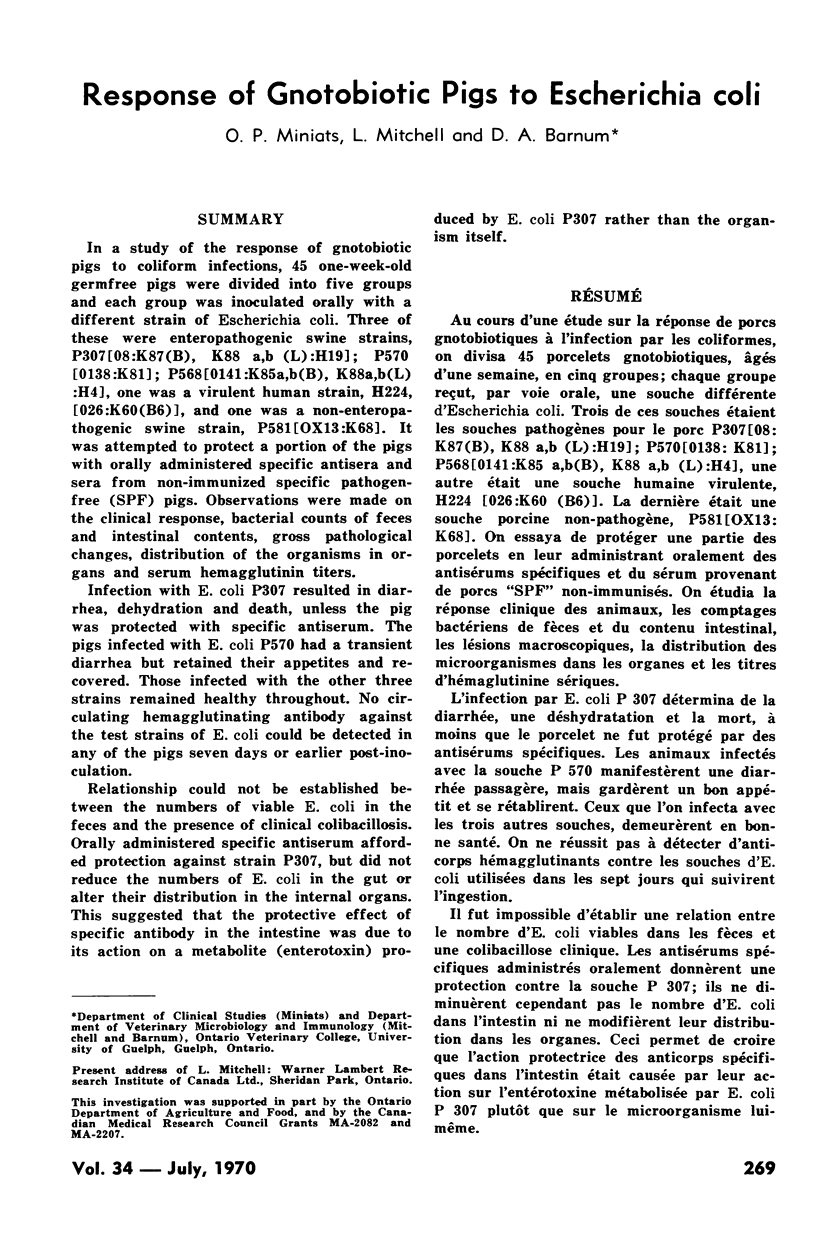
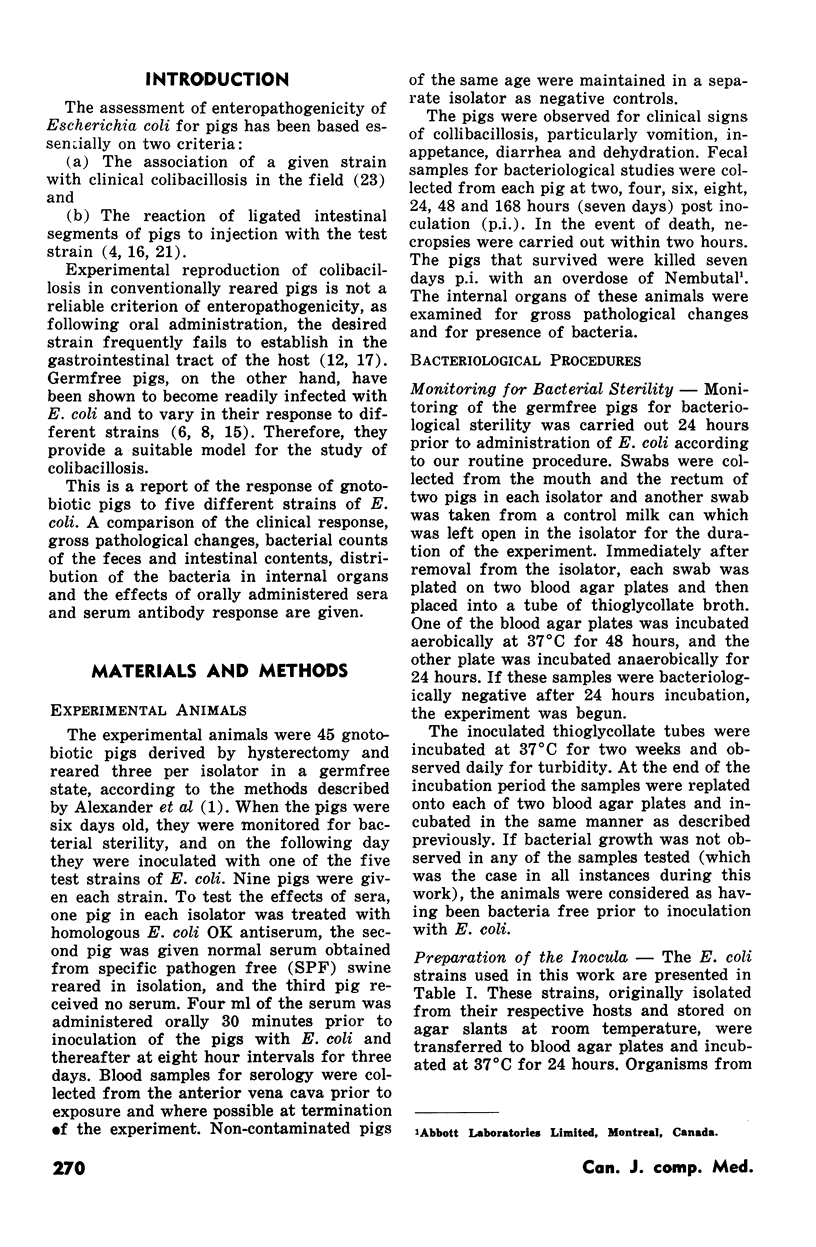
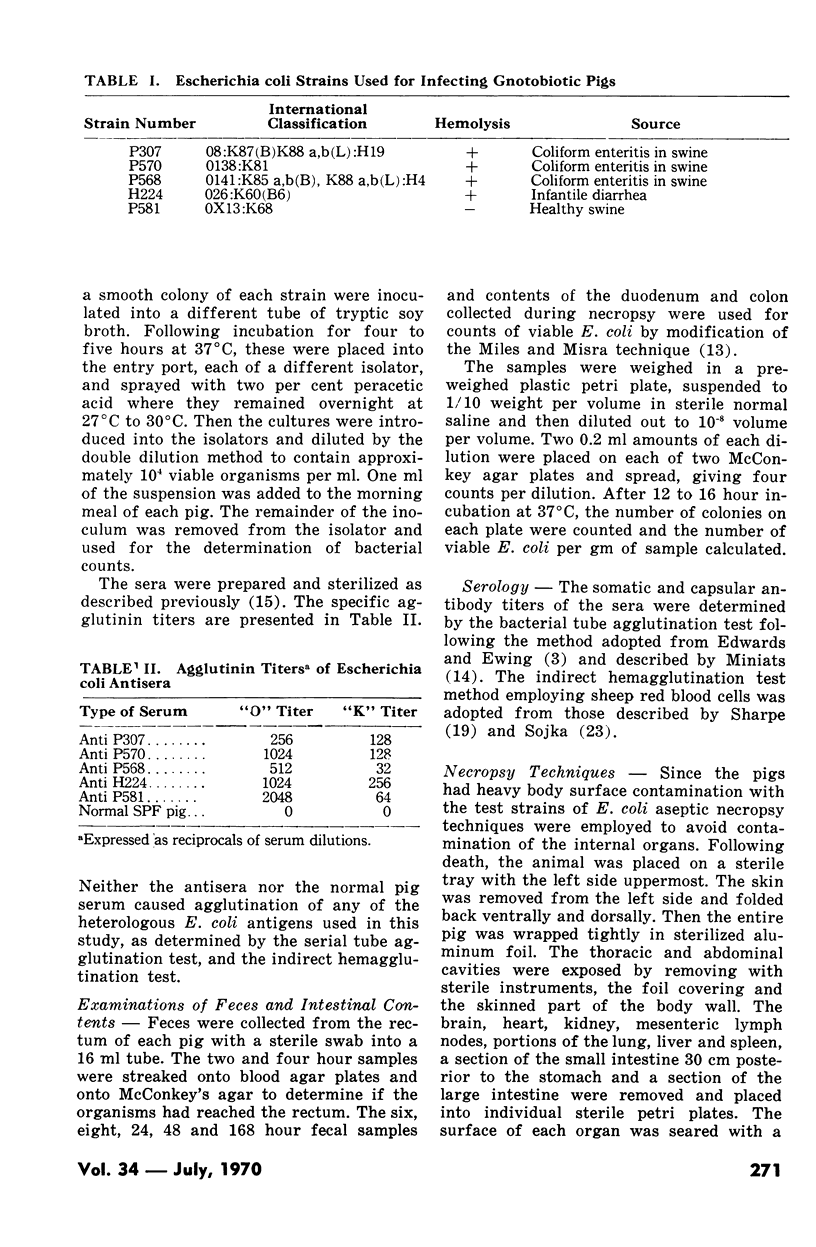
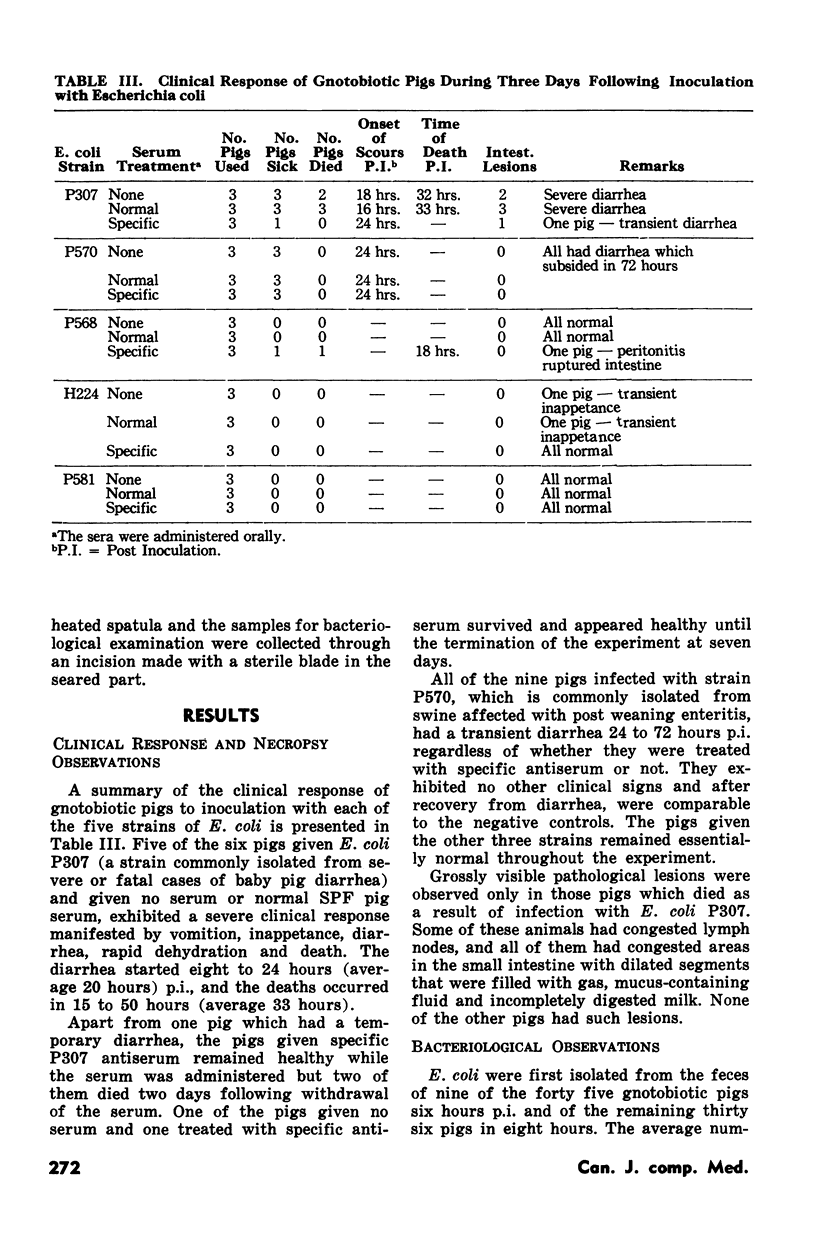
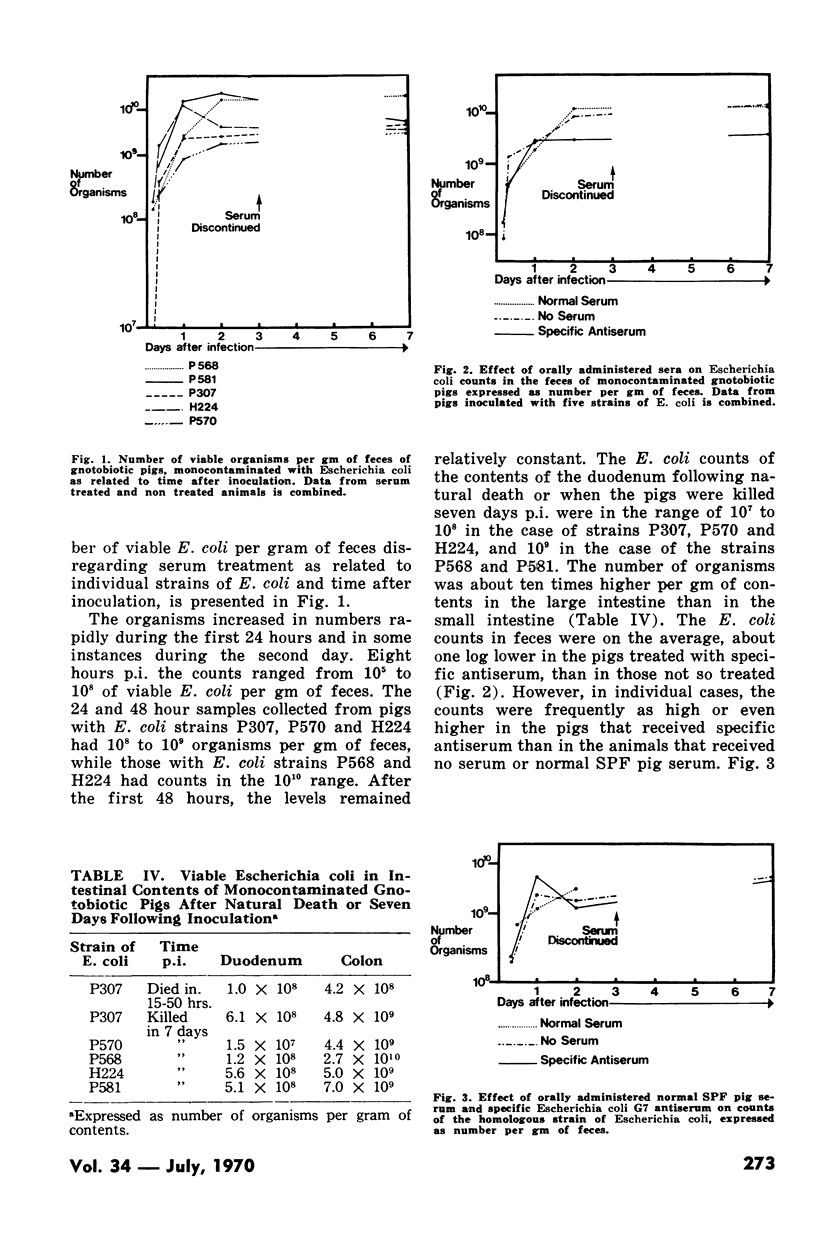
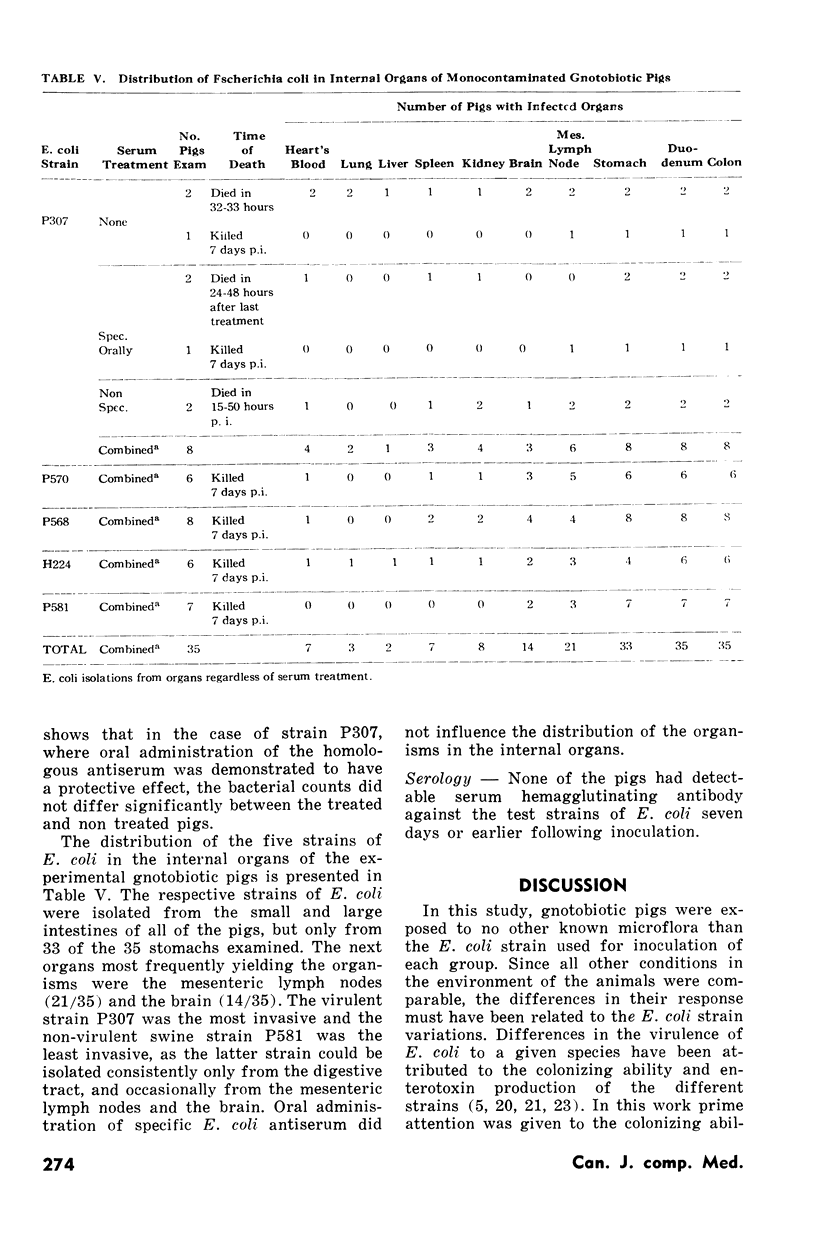
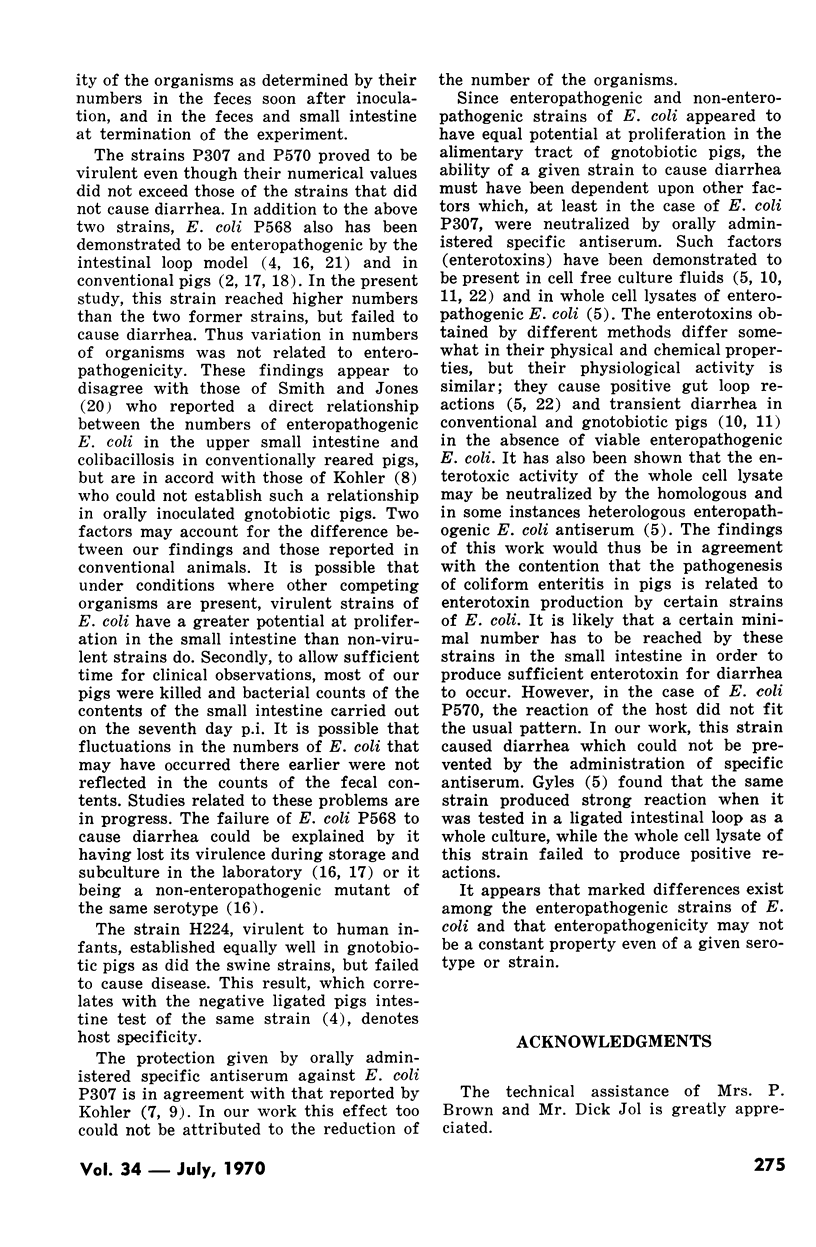
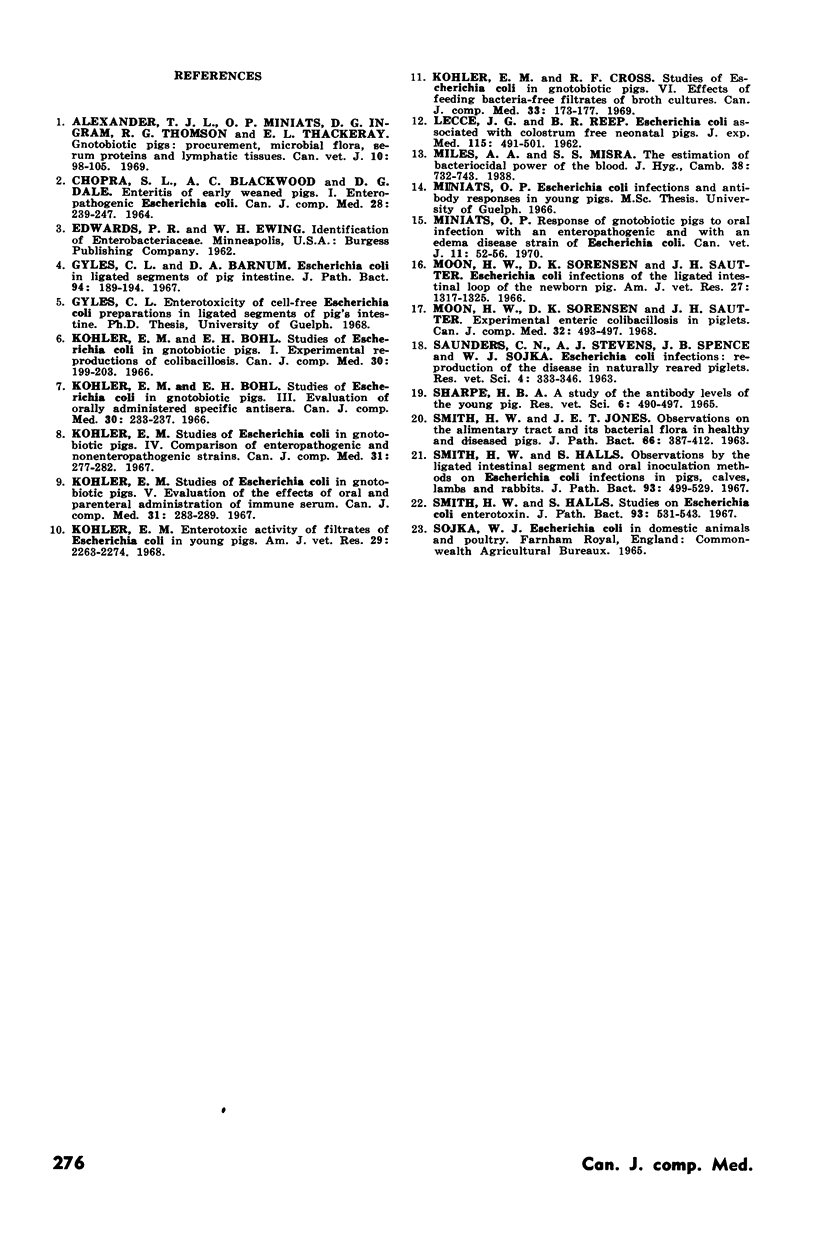
Selected References
These references are in PubMed. This may not be the complete list of references from this article.
- Alexander T. J., Miniats O. P., Ingram D. G., Thomson R. G., Thackeray E. L. Gnotobiotic pigs: procurement, microbial flora, serum proteins and lymphatic tissues. Can Vet J. 1969 Apr;10(4):98–105. [PMC free article] [PubMed] [Google Scholar]
- Chopra S. L., Blackwood A. C., Dale D. G. Enteritis of Early Weaned Pigs: I. Enteropathogenic Escherichia coli. Can J Comp Med Vet Sci. 1964 Oct;28(10):239–247. [PMC free article] [PubMed] [Google Scholar]
- Gyles C. L., Barnum D. A. Escherichia coli in ligated segments of pig intestine. J Pathol Bacteriol. 1967 Jul;94(1):189–194. doi: 10.1002/path.1700940124. [DOI] [PubMed] [Google Scholar]
- Kohler E. M., Bohl E. H. Studies of Escherichia coli in gnotobiotic pigs 3. Evaluation of orally administered specific antisera. Can J Comp Med Vet Sci. 1966 Aug;30(8):233–237. [PMC free article] [PubMed] [Google Scholar]
- Kohler E. M., Bohl E. H. Studies of Escherichia coli in gnotobiotic pigs. I. Experimental reproduction of colibacillosis. Can J Comp Med Vet Sci. 1966 Jul;30(7):199–203. [PMC free article] [PubMed] [Google Scholar]
- Kohler E. M., Cross R. F. Studies of escherichia coli in gnotobiotic pigs. VI. Effects of feeding bacteria-free filtrates of broth cultures. Can J Comp Med. 1969 Jul;33(3):173–177. [PMC free article] [PubMed] [Google Scholar]
- Kohler E. M. Enterotoxic activity of filtrates of escherichia coli in young pigs. Am J Vet Res. 1968 Dec;29(12):2263–2274. [PubMed] [Google Scholar]
- Kohler E. M. Studies of escherichia coli in gnotobiotic pigs. IV. Comparison of enteropathogenic and nonenteropathogenic strains. Can J Comp Med Vet Sci. 1967 Nov;31(11):277–282. [PMC free article] [PubMed] [Google Scholar]
- Kohler E. M. Studies of escherichia coli in gnotobiotic pigs. V. Evaluation of the effects of oral and parenteral administration of immune serum. Can J Comp Med Vet Sci. 1967 Nov;31(11):283–289. [PMC free article] [PubMed] [Google Scholar]
- LECCE J. G., REEP B. R. Escherichia coli associated with colostrum-free neonatal pigs raised in isolation. J Exp Med. 1962 Mar 1;115:491–501. doi: 10.1084/jem.115.3.491. [DOI] [PMC free article] [PubMed] [Google Scholar]
- Miniats O. P. Response of gnotobiotic pigs to oral infection with an enteropathogenic and with an edema disease strain of Escherichia coli. Can Vet J. 1970 Mar;11(3):52–56. [PMC free article] [PubMed] [Google Scholar]
- Moon H. W., Sorensen D. K., Sautter J. H. Experimental enteric colibacillosis in piglets. Can J Comp Med. 1968 Jul;32(3):493–497. [PMC free article] [PubMed] [Google Scholar]
- SMITH H. W., JONES J. E. OBSERVATIONS ON THE ALIMENTARY TRACT AND ITS BACTERIAL FLORA IN HEALTHY AND DISEASED PIGS. J Pathol Bacteriol. 1963 Oct;86:387–412. [PubMed] [Google Scholar]
- Sharpe H. B. A study of antibody levels in the young pig. Res Vet Sci. 1965 Oct;6(4):490–497. [PubMed] [Google Scholar]
- Smith H. W., Halls S. Observations by the ligated intestinal segment and oral inoculation methods on Escherichia coli infections in pigs, calves, lambs and rabbits. J Pathol Bacteriol. 1967 Apr;93(2):499–529. doi: 10.1002/path.1700930211. [DOI] [PubMed] [Google Scholar]
- Smith H. W., Halls S. Studies on Escherichia coli enterotoxin. J Pathol Bacteriol. 1967 Apr;93(2):531–543. doi: 10.1002/path.1700930212. [DOI] [PubMed] [Google Scholar]


